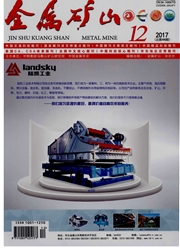

 中文摘要:
中文摘要:
在给定的露天矿境界中做生产计划,就是确定每年采场的推进位置、采剥量。不同的生产计划,每年的采剥量和采场推进位置也就不同,造成每年采场、排土场的破坏面积以及每年的污染物排放量不同,从而引发不同程度的生态破坏。鉴于此,首先基于一个已知最优境界,使用锥体排除法产生一系列地质最优开采体并进行动态排序;然后采用动态规划法对某大型露天煤矿设计多个生产方案,同时根据矿山环境破坏的时空顺序,建立矿山生态足迹和生态成本计算模型,评估生产方案与环境压力之间的相互影响关系。研究表明,不同的生产设计方案对矿山生态冲击不同,且生态成本占矿山总净现值比例较大,同时生态成本对优化方案的选择产生影响。
 英文摘要:
英文摘要:
For a given boundary of the open pit,production scheduling is made to determine the advancing position and the striping and mining of the pit each year. Different production scheduling has different advancing positions and capacity of mining and stripping,resulting in different damage areas of stope and waste dump and the emissions of pollutants each year. All these cause some degree of ecological damage. In view of these,according to the optimum boundary obtained,a series of pits with optimum geological feature have been produced and realized dynamic sequencing by the cone exclusive method. Then a dynamic programming was used to design multiple production schemes for a large open pit coal mine. According to the space-time sequence of mine environment damage,mine ecological footprint and cost models were constructed to assess the relationship between the production program and the environment. The results show that different production scheduling has different ecological impacts and the ecological costs take a larger proportion of the total net value. At the same time,ecological costs have an impact on the selection of optimized schemes.
 同期刊论文项目
同期刊论文项目
 同项目期刊论文
同项目期刊论文
 期刊信息
期刊信息
